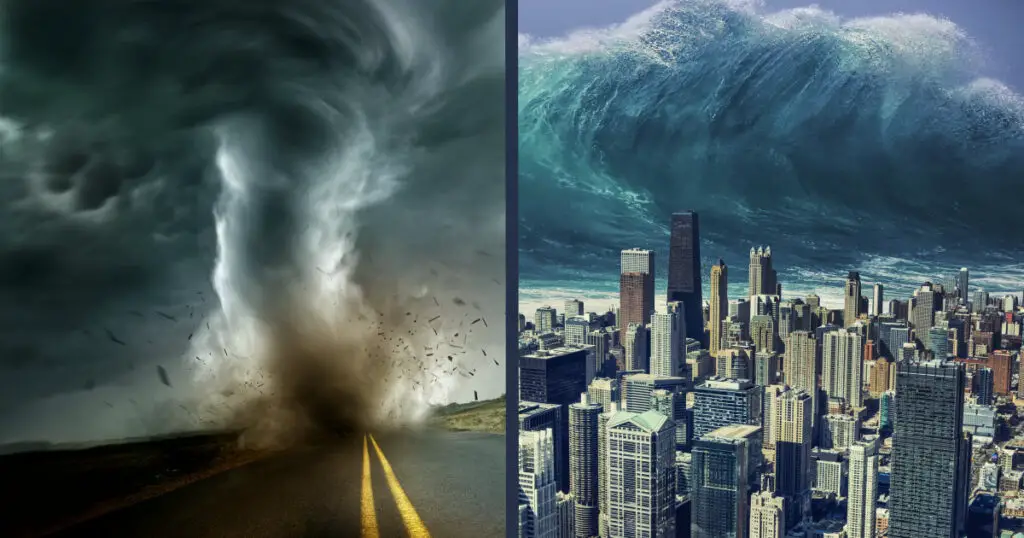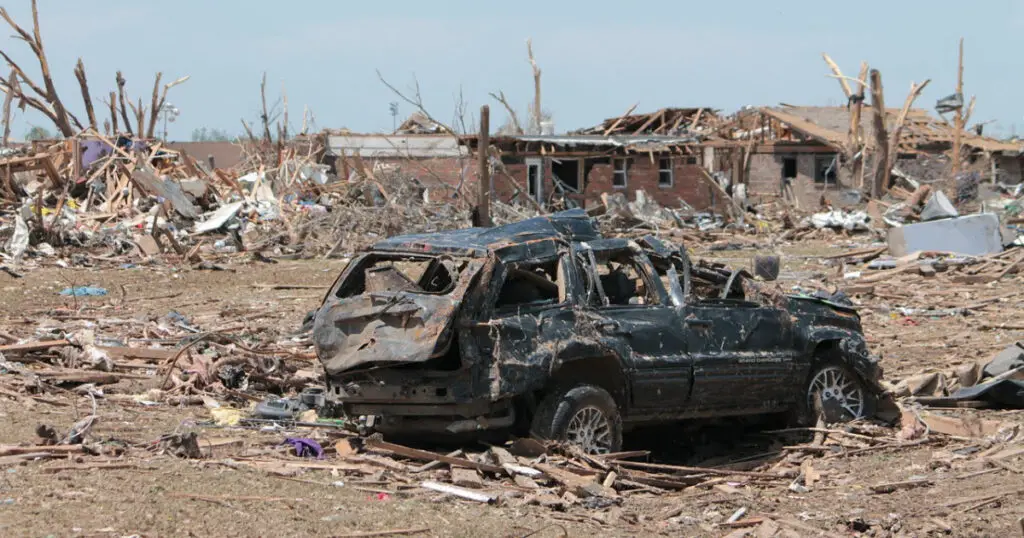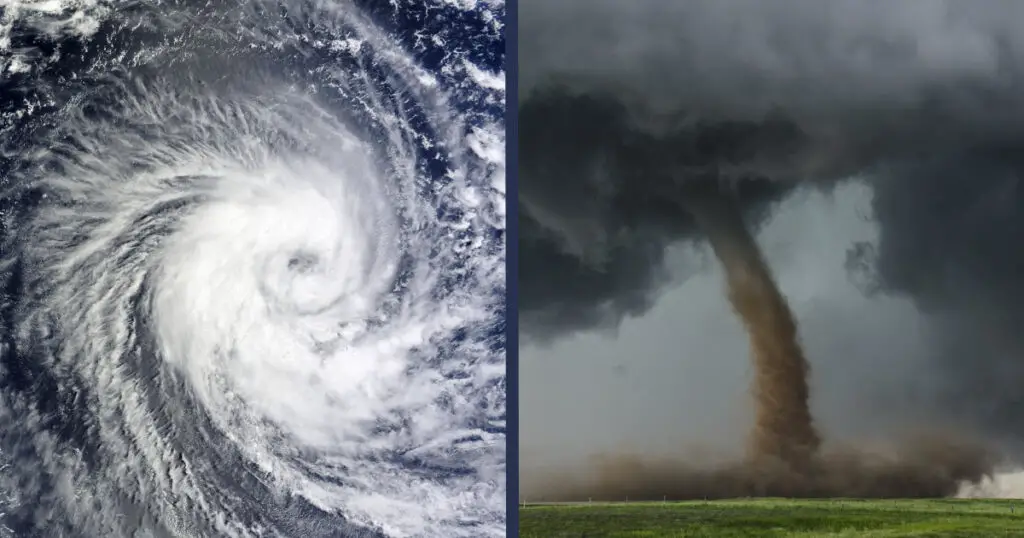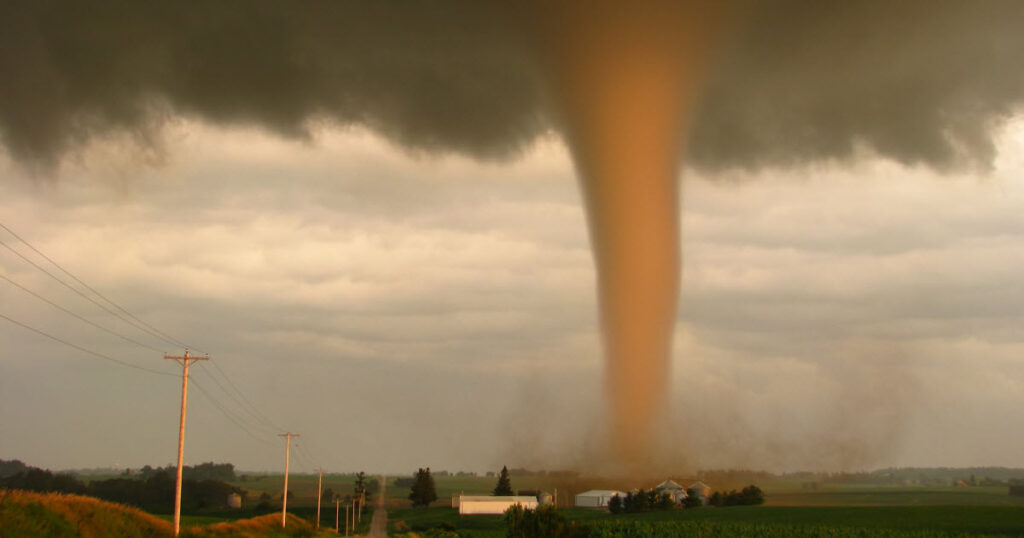They both start with a T, and they are both pretty destructive. When you hear about a tornado or a tsunami, you know it is going to be big news. Both are forces of nature that serve humans a big slice of humble pie, but what is the difference between a tornado vs tsunami?
When nature strikes, it often does so indiscriminately. It is important to know the difference between the kinds of natural disasters that can occur. In this article, we will compare tornadoes and tsunamis, dishing out the similarities and the differences between the two. With this knowledge you can differentiate between the two and also have some natural disaster facts for your next quiz night.
Let’s get to know what they are first.
Tornadoes
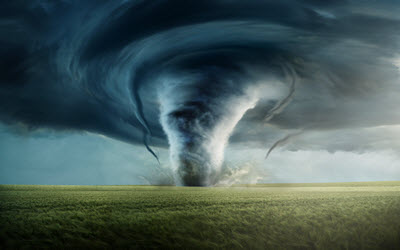
Tornadoes form large columns of rotating air created by differences in air pressure and temperature.
Tsunamis
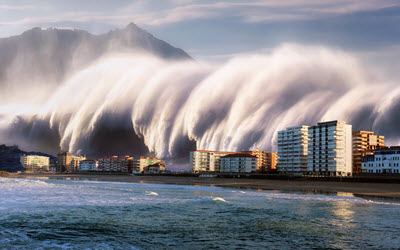
Tsunamis form a gigantic series of waves due to movements of tectonic plates.
Similarities Between Tornadoes and Tsunamis
Tornadoes and tsunamis are very different natural phenomena. The causes are very different and very unique. The two of them are similar only in the way of being natural disasters, that they are unpredictable and that they can cause a lot of damage when they occur.
Tsunamis and tornadoes draw a lot of media attention simply because of their unwelcomed arrival, and the wake of damage that they bring along. They impact everything that they touch and pass through.
Another similarity is that they depend on a fluid as their mode of destruction. Tornadoes use air and tsunamis use water.
| Related Posts |
|---|
Differences Between Tornadoes and Tsunamis
Now let’s take a closer look at some of the key differences between Tsunamis and Tornadoes:
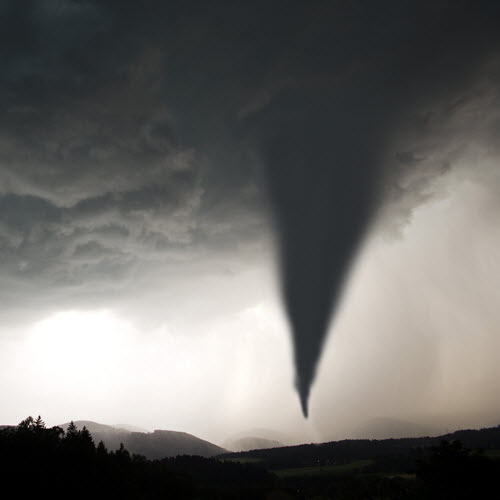
Cause
| Tornado | Tsunami |
| Tornadoes are formed when cool and warm air meet and turn in to columns of air that create and updraft and downdraft. The winds come from different directions and speeds. The collision forces the winds to create the columns of air during a thunderstorm. With the right temperature of cold winds, clouds are formed which in turn form a funnel. When the funnel touches the ground, it can move in any direction and, depending on the strength of the winds, stay for anywhere between a few minutes to three hours. | Tsunamis are caused by earthquakes under the sea or ocean. The sea floor deforms for a short amount of time and moves vertically. The displacement of water moves up, causing the water to move forward in the shape of a wave. The waves grow in height as they reach shallow water. Coastal areas are in the most danger when tsunamis occur. Apart from seismic activities (otherwise known as earthquakes), landslides and storms can also cause tsunamis. |
Shape
| Tornado | Tsunami |
| Tornadoes are primarily funnel shaped. They are wider at the base of the cloud and thinner near the ground. Depending on their shape, they can have different names, such as wedge tornado, rope tornado, cone tornado, and satellite tornado. They vary in size but the overall shape is the same. The top is always wider than the point at which the tornado touches the ground. | Tsunamis come in the form of tidal waves. The waves move in troughs and crests, moving forward, causing flooding. Tsunamis can have a height of about 100 meters. The waves are not always too high in the open seas, but as it travels closer to land and becomes shallow, the amplitude of the waves increases. |
Movement
| Tornado | Tsunami |
| Tornadoes can move in any direction depending on the strength of winds from opposing directions. The stronger wind tends to push the tornado forward. A tornado can move as fast as 95 mph, but the wind speeds can go up to 350 mph. | Tsunamis move outward from the source of displacement and the waves move towards land. Tsunamis can move at the speeds of 30 mph. |
Damage
| Tornado | Tsunami |
| Winds pick up objects, uproot trees, telephone poles, and are even capable of flinging cars in different directions. Tornadoes can destroy large buildings, tear off the roofs of houses, and break glass windows through sheer force of the winds. The damage done by tornadoes can be found in the path, which can be one mile to 50 miles long. | Tidal waves come crashing inland. They can destroy boats, buildings, bridges, cars, trees, telephone lines, and power lines. Tsunamis can also be large enough to flood communities. The way a tsunami damages is with two phases. The first part of the damage comes from the smashing force of the water that it brings along at high speeds. The next phase is caused by the water moving back to the sea, pulling items and sometimes people along with it. |
Occurrence
| Tornado | Tsunami |
| Yearly over 1000 tornadoes are recorded in the United States alone. | Yearly only 2 tsunamis are recorded on average globally. |
How Is It Measured?
| Tornado | Tsunami |
| Tornadoes are measured for their strength and the damage that they can do based on their speed. This is measured on the Enhanced Fujita Scale, which is from 0 to 5, with 5 being the highest level and the most dangerous. They are also measured by barometric pressure, doppler radar, and “turtles”, which are small devices that measure humidity, temperature, pressure, and the wind’s speed and direction. | Tsunamis are measured with tide gauges, satellites, and the DART system. Tide gauges measure the height of the sea waves. Satellites also measure the height of the sea surface by relying on electro-magnetic pulses. The DART system is the Deep-ocean Assessment and Reporting of Tsunamis system. This is a collection of stations that are deployed in the Pacific Ocean. These stations are connected to a sea-bed bottom pressure recorder that detects the passage of tsunamis. The information is transmitted to a surface buoy, which uses sonar to collect information. |
How to Stay Safe
| Tornado | Tsunami |
| Look for cover. The best is to go underground, however in the absence of a basement or a bunker, make sure you lie low, close to the ground. This is especially important to know when you are in your house. Make sure that you are avoiding the windows so that you do not get hit by glass if it breaks. If you are on foot, do not try to outrun a tornado. Try to look for a place to stay low and avoid being near a tree or pole. If you are in a car, pull over and look for shelter or find a ditch to lay in. You will not be able to outrun a tornado in a vehicle. | Try to find higher ground as soon as you hear a tsunami warning. Listen very carefully to the emergency information and alerts. Always follow instructions that are provided. Stay safe until the officials announce that it is safe to come out. Tsunamis can have follow up waves, and these waves can be more severe. If you are on a boat, go out to sea. |
Other Names
| Tornado | Tsunami |
| Twister | Tidal waves, seismic waves |
Final Comparison: Tornado vs Tsunami
Tornadoes and tsunamis are powerful natural phenomena that leave a big mark in the human memory. Historic data has shown how much these monsters have caused damage to the areas that they have met. Both of them are indiscriminately destructive, incredibly dangerous, and immensely towering.
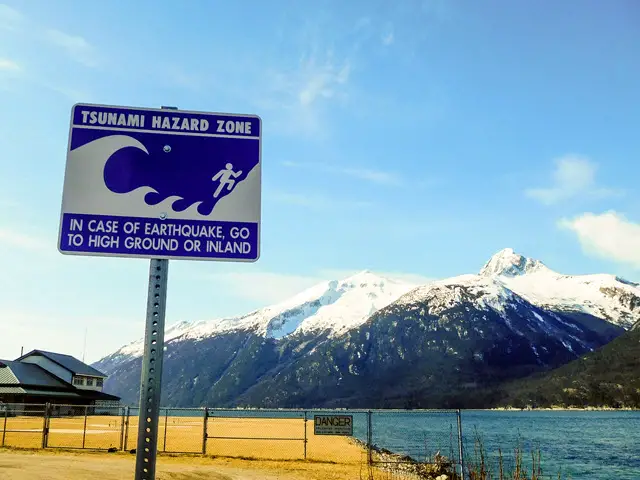
While they differ in causes and modes of destruction, the two always play by their own rules. The areas that they hits are at their mercy. We will never learn to control them.
